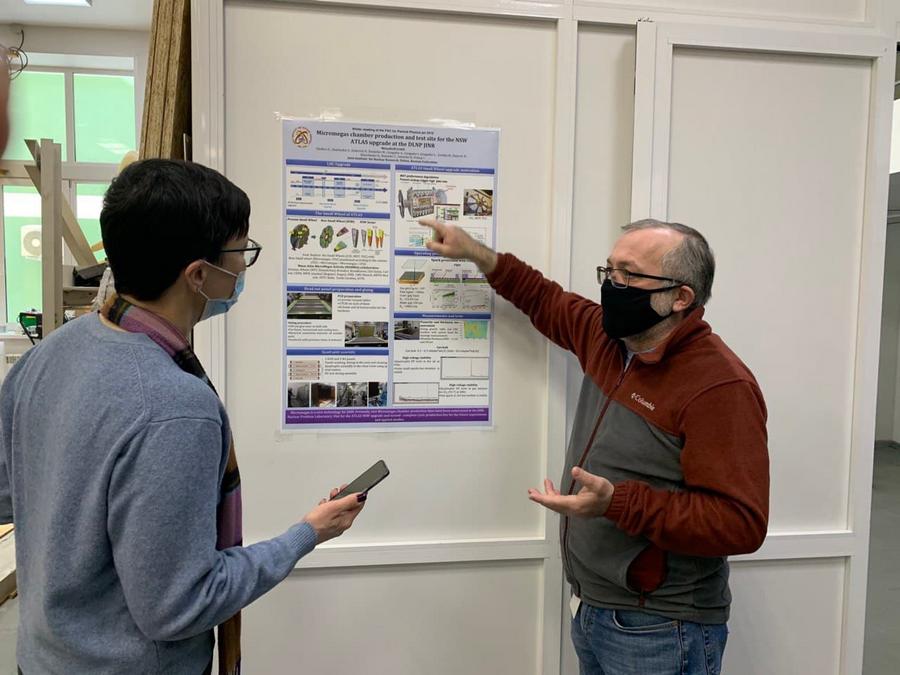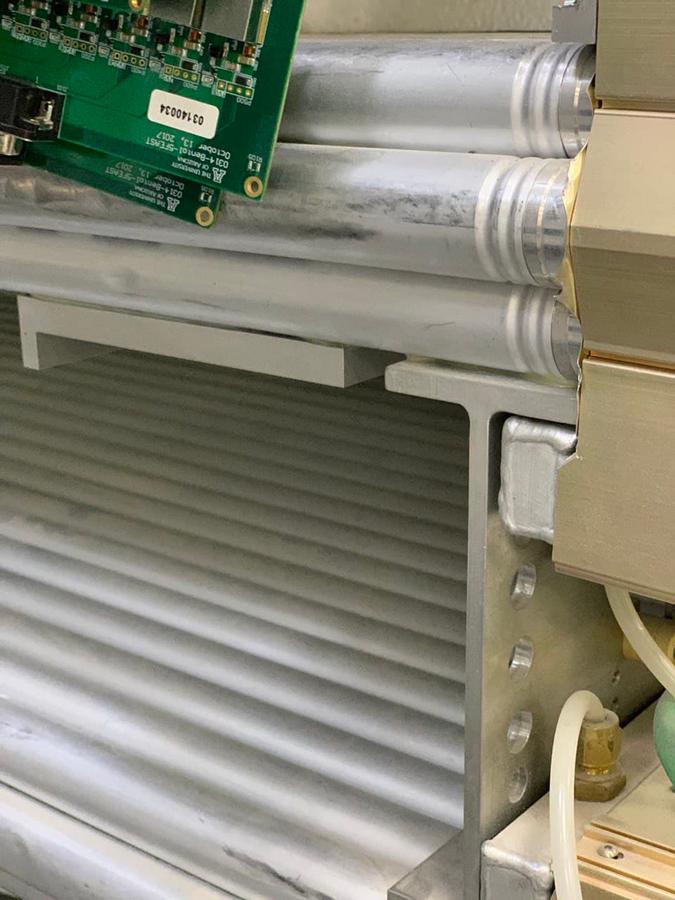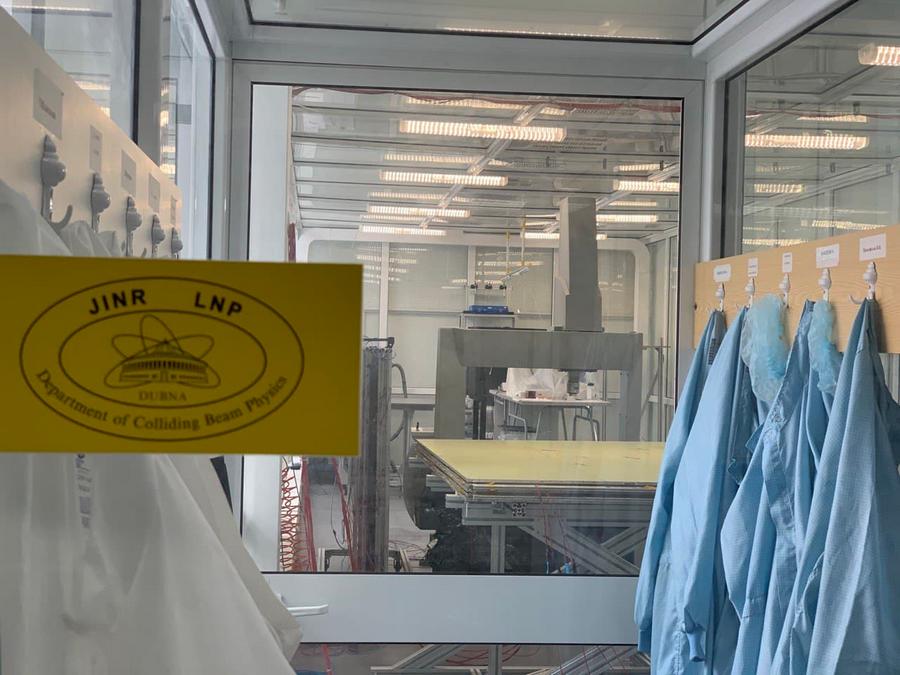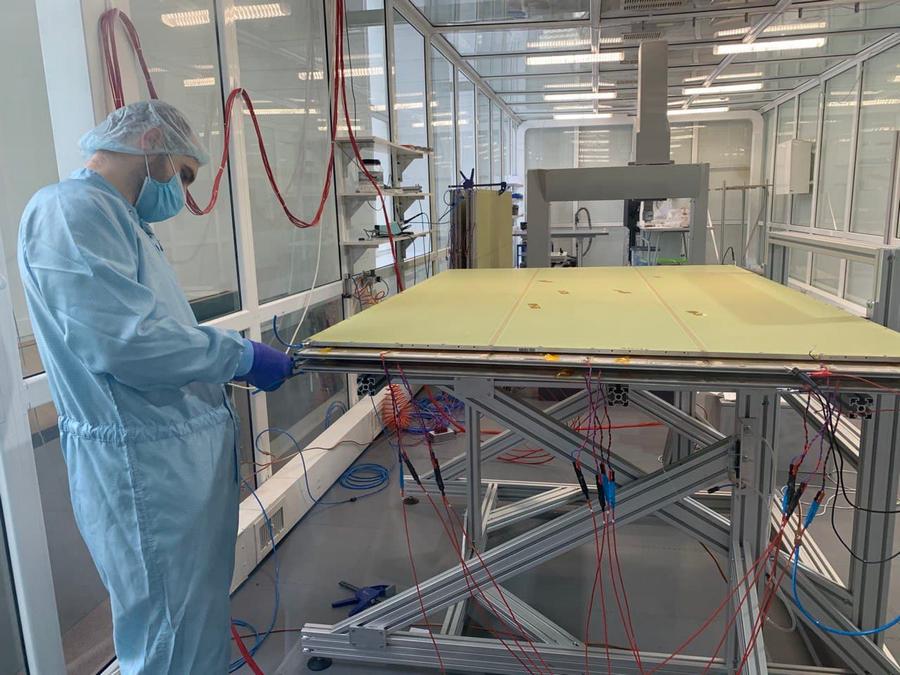DLNP completes production of Micromegas detectors for ATLAS
News, 26 February 2021
This March, Section 3 of Proton−Antiproton Interactions of the Experimental Department of Colliding Beams at the Laboratory of Nuclear Problems will complete manufacturing Micromegas detectors for new small wheels (NSWs) of the muon spectrometer of the ATLAS experiment at the Large Hadron Collider (LHC) according to the LHC Phase 1 upgrade.
 Maria Pilipenko and Aleksi Gongadze
Maria Pilipenko and Aleksi Gongadze
n 2018, the LHC was shut down for the planned upgrade. Spectrometer components are replaced, first of all, those close to the proton beam interaction point. They are not designed for load growth resulted from the increase in collider luminosity and energy during the next run.
To launch mass production and to test the largest Micromegas detectors for the NSWs, a special site was equipped at DLNP, including two clean workrooms and testing areas. A total of all modules assembled and tested here will be 32 (+1 spare module).
The DLNP Section is involved in the ATLAS detector upgrade not only through manufacturing and testing modules but also through their installation on the NSW structures at CERN, testing and commissioning.
Note that the second complete-cycle line for Micromegas detector production was launched and is successfully operating. It is not related to ATLAS and allows JINR employees to participate more efficiently in different physical experiments.
 Due to the COVID-19 pandemic, the LHC operation was stopped in spring, which affected the overall schedule. Now, the Section team is working hard not only to deliver detectors in time but also to commission the NSWs by December−January 2022. As soon as February 2022, the ATLAS experiment caverns will be closed and the collider startup preparation will get underway.
Due to the COVID-19 pandemic, the LHC operation was stopped in spring, which affected the overall schedule. Now, the Section team is working hard not only to deliver detectors in time but also to commission the NSWs by December−January 2022. As soon as February 2022, the ATLAS experiment caverns will be closed and the collider startup preparation will get underway.
We thank the Head of the project at JINR Aleksi Gongadze for the tour and explanations.
Source: DLNP
Read also the following:
About creation of the site for mass production of Micromegas chambers in DLNP JINR, 23.05.17
About production of Micromegas chambers in DLNP JINR, 22.12.19
Scientists of the Joint Institute for Nuclear Research take an active part in the ATLAS experiment at the Large Hadron Collider (LHC). JINR began to participate in the experiment at the stages of its preliminary research and development, and later became one of the main participants of ATLAS.

